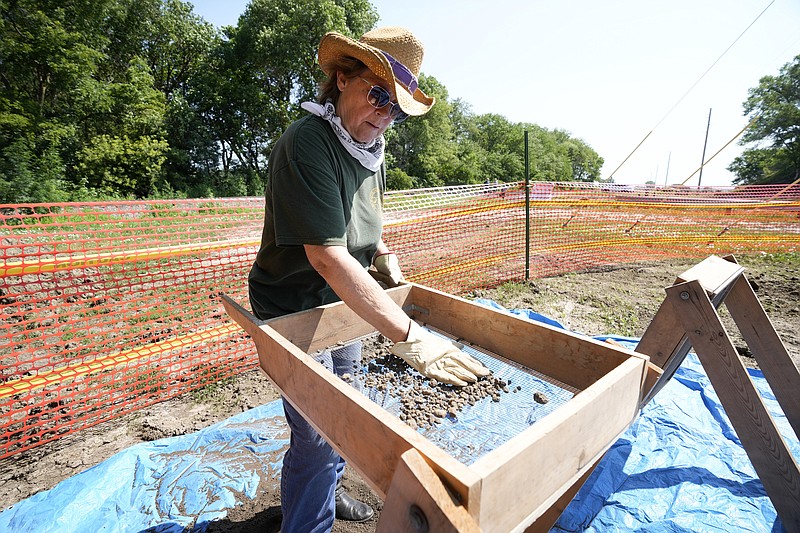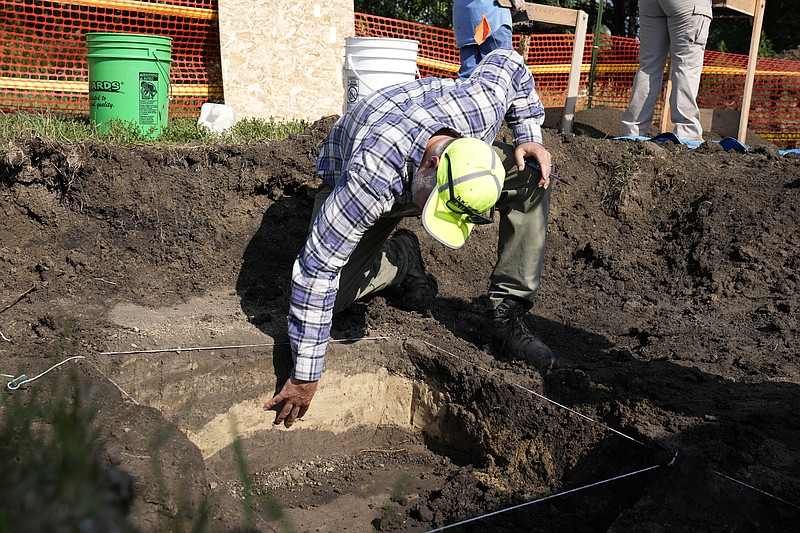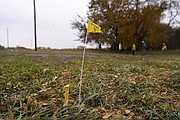
JULY 2023
GENOA, Neb. (AP) — Amid a renewed push for answers, archeologists planned to resume digging Tuesday at the remote site of a former Native American boarding school in central Nebraska, searching for the remains of children who died there decades ago.
The search for a hidden cemetery near the former Genoa Indian Industrial School in Nebraska gained renewed interest after the discovery of hundreds of children’s remains at Native American boarding school sites in the U.S. and Canada since 2021, said Dave Williams, the state's archeologist who's digging at the site with teammates this week.
The team hadn't found any remains by Monday afternoon, but the dig had only just begun.
“Where is the cemetery and how many people are buried there? It's the big question that's hanging in the air,” said Alyce Tejral, a board member of the nearby Genoa U.S. Indian School Foundation Museum.
Genoa was part of a national system of more than 400 Native American boarding schools that attempted to assimilate Indigenous people into white culture by separating children from their families, cutting them off from their heritage and inflicting physical and emotional abuse.
Judi gaiashkibos, the executive director of the Nebraska Commission on Indian Affairs, whose mother attended the school in the late 1920s, has been involved in the cemetery effort for years. She said it’s difficult to spend time in the community where many Native Americans suffered, but the vital search can help with healing and bringing the children’s voices to the surface.
Williams, the archeologist, said finding the location of the cemetery and the burials contained within it may provide some peace and comfort to people who have suffered a long period of not knowing exactly what happened to their relatives who were sent to boarding schools and never came home.
The school, about 90 miles (145 kilometers) west of Omaha, opened in 1884 and at its height was home to nearly 600 students from more than 40 tribes across the country. It closed in 1931 and most buildings were long ago demolished.
Newspaper clippings, records and a student’s letter indicate at least 86 students died at the school, usually due to diseases such as tuberculosis and typhoid, but at least one death was blamed on an accidental shooting.
Researchers identified 49 of the children killed but have not been able to find names for 37 students. The bodies of some of those children were returned to their homes but others are believed to have been buried on the school grounds at a location long forgotten.
As part of an effort to find the cemetery, last summer dogs trained to detect the faint odor of decaying remains searched the area and signaled they had found a burial site in a narrow piece of land bordered by a farm field, railroad tracks and a canal.
A team using ground-penetrating radar last November also showed an area that was consistent with graves, but there will be no guarantees until researchers finish digging into the ground, Williams said.
The process is expected to take several days.
If the dig reveals human remains, the State Archeology Office will continue to work with the Nebraska Commission on Indian Affairs in deciding what’s next. They could rebury the remains in the field and create a memorial or exhume and return the bodies to tribes.
Last year, the U.S. Interior Department — led by Secretary Deb Haaland, a member of Laguna Pueblo in New Mexico and the first Native American Cabinet secretary — released a first-of-its-kind report that named hundreds of schools the federal government supported to strip Native Americans of their cultures and identities.
At least 500 children died at some of the schools, but that number is expected to reach into the thousands or tens of thousands as research continues.
___
Ahmed reported from Minneapolis. Scott McFetridge contributed from Des Moines, Iowa.
**
No children's remains found in Nebraska dig near former Native American boarding school
July 22, 2023 by TRISHA AHMED / Associated Press/Report for America

An archeological dig for a lost children's cemetery near the Nebraska site of a former Native American boarding school has ended after two weeks — and no remains were found.
Dave Williams, the state's archeologist, said the team searching near the former Genoa Indian Industrial School plans to meet on Zoom with representatives of 40 tribes across the U.S. next week to determine next steps.
"I would have preferred that we found the children," said Judi gaiashkibos, a member of the Ponca Tribe of Nebraska and the executive director of the Nebraska Commission on Indian Affairs. "But we have to remain hopeful. They've been gone more than 90 years. I feel like I have to remain steadfast and committed."
The search for gained renewed interest after hundreds of children's remains were discovered at other Native American boarding school sites across the U.S. and Canada in recent years.
Dogs trained to detect the odor of decaying remains searched the area last summer and indicated there could be a burial site in a strip of land bordered by a farm field, railroad tracks and a canal. In November, ground-penetrating radar identified four anomalies — or areas of disturbed soil beneath the ground surface — in the shapes of graves.
Williams and his team spent the last two weeks excavating, but didn't find the first anomaly they were seeking, which could've contained children's remains.
"That's one of the challenges of archaeology," Williams said. "We can have a lot of evidence that something should be where we think it's going to be. And then once we actually get in and open up the ground and take a look, it's not what we expected."
They'll spend the next few weeks reevaluating the data and everything that led them to that location, Williams said, and figure out a new plan in consultation with the dozens of tribes that lost their children to the school.
There are three other anomalies nearby. Crews could search for those, pursue other leads or stop the search entirely if the tribes collectively decide that's what they want, Williams said, but he hopes the team can still help the tribes, find the children and "bring them to rest in a satisfactory way."
Sunshine Thomas-Bear, a member of the Winnebago Tribe of Nebraska and the cultural preservation director for the tribe, said she wishes there had been more consultation with all 40 tribes — and not just the tribes in Nebraska — before now. She's looking forward to that happening more in this next phase.
"Nothing was found this time. But perhaps that was because we weren't all ready yet," Thomas-Bear said. "There were tribes that weren't notified, there were tribes that weren't there. We believe that everything happens for a reason. I think that if we get on the right track together, perhaps we'll be more successful."
The Genoa Indian Industrial School was part of a national system of more than 400 Native American boarding schools that attempted to assimilate Indigenous people into white culture by separating children from their families, prohibiting them from speaking their Native languages, cutting them off from their heritage and inflicting abuse.
The school, about 90 miles (145 kilometers) west of Omaha, opened in 1884 and at its height was home to nearly 600 students. It closed in the 1930s and most buildings were demolished long ago.
The U.S. Interior Department — led by Secretary Deb Haaland, a member of Laguna Pueblo in New Mexico and the first Native American Cabinet secretary — released a first-of-its-kind report last year that named hundreds of schools the federal government supported to strip Native Americans of their cultures and identities.
At least 500 children died at some of the schools, but that number is expected to reach into the thousands or tens of thousands as efforts like the Nebraska dig continue.







No comments:
Post a Comment
Please leave a comment.